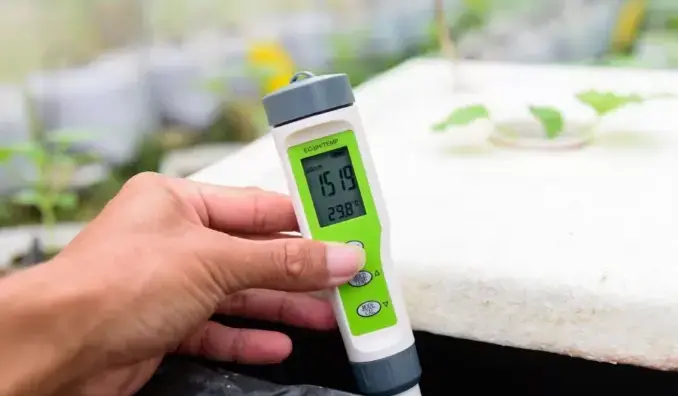Success in hydroponics doesn’t depend only on the nutrients you provide to your plants, but also on the pH of the water they use to absorb them.
In this ToDo Hydro blog, we explain everything you need to know about pH: how it affects plant growth, how to measure it correctly, and what the ideal pH is for each type of crop.

🌱 What is pH and why is it so important in hydroponics?
pH (hydrogen potential) is a scale that measures how acidic or alkaline a solution is. It ranges from 0 to 14:
pH 0–6.9: Acidic
pH 7: Neutral
pH 7.1–14: Alkaline
In hydroponics, the pH of the water and nutrient solution directly affects nutrient absorption by the roots.
If the pH is outside the ideal range, even if all nutrients are present, plants will not be able to absorb them properly.
💧 What is the ideal pH for hydroponic crops?
The ideal pH range for most hydroponic crops is:
👉 Between 5.5 and 6.5
This slightly acidic range ensures optimal availability of macro and micronutrients.
Outside this range, certain nutrients become less available:
High pH (alkaline): Iron, manganese, copper, and zinc availability decreases
Low pH (acidic): Risk of metal toxicity, such as aluminum and manganese
🌿 Recommended pH ranges for common hydroponic crops
| Plant | Ideal pH |
| Lettuce | 5.5 – 6.5 |
| Tomato | 5.5 – 6.5 |
| Basil | 5.5 – 6.5 |
| Spinach | 6.0 – 7.0 |
| Strawberry | 5.5 – 6.5 |
| Bell Pepper | 5.5 – 6.5 |
| Cucumber | 5.8 – 6.0 |
| Kale | 6.0 – 7.5 |
🔬 How to measure pH in hydroponics
There are several ways to measure pH. The ideal choice depends on your budget, production level, and desired accuracy.
Most common methods:
Digital pH meters
High accuracy
Easy to use
Require frequent calibration and electrode cleaning
Recommended for professional growers
pH test strips
1Economical and practical
Less precise
Suitable for beginners or quick tests
Liquid test kits
Use drops and color comparison
Good intermediate option
Requires careful visual reading
🧪 How often should I measure pH?
In hydroponic systems, pH should be monitored daily or every two days.
Sudden changes can occur due to:
Selective nutrient uptake
Water evaporation
Quality of replacement water
💡 Tip: Keep daily records in a spreadsheet to identify patterns and prevent problems.
🧯 How to adjust pH: raise or lower it
If pH goes out of the ideal range, it must be corrected.
To lower pH (more acidic):
Use phosphoric acid or nitric acid
We offer the product “pH Down”
To raise pH (more alkaline):
Use potassium hydroxide or sodium hydroxide
We also have “pH Up”
⚠️ Always add products gradually and measure again after mixing.
💬 Final tips to keep pH stable
Use good-quality water with low electrical conductivity (EC)
Avoid excess nutrients in the solution
Keep the system clean to prevent chemical imbalances
Measure pH before and after adding nutrients
Replace the nutrient solution every 1–2 weeks
pH is one of the most important factors in hydroponics.
Although often overlooked, poorly adjusted pH can prevent healthy plant development and cause nutrient deficiencies.
At ToDo Hydro, we help you understand and control every detail of your crop.
If you want to improve your production, start by controlling pH correctly.
Did you enjoy this content?
Do you have suggestions for the next article? Leave your comment!
See you next time! 👋


